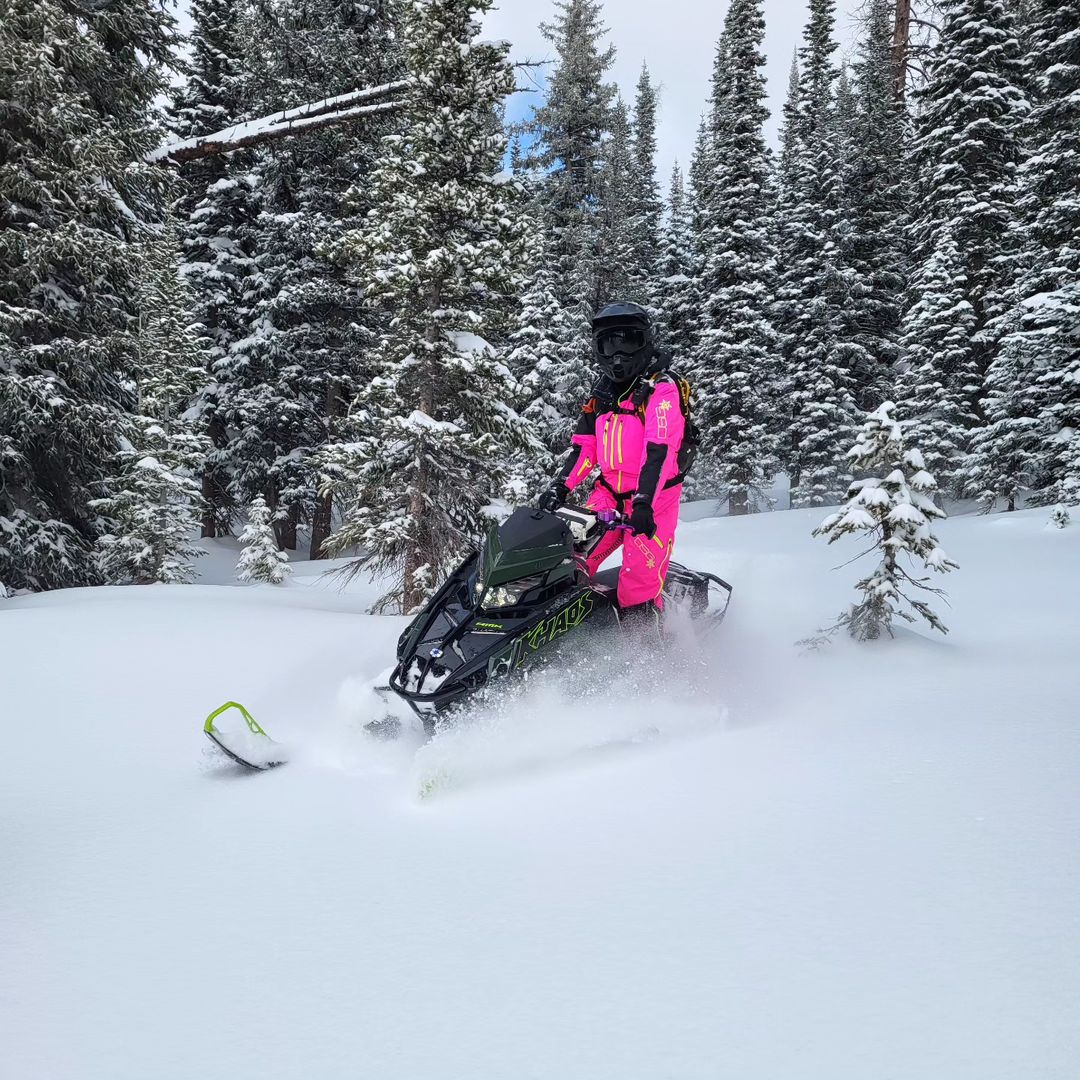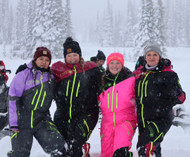Packing for a Successful Snowmobile Outing
Jan 12th 2023
Snowmobile riding, and taking prolonged trips into the backcountry in the dead of winter, can be an enjoyable way to get outdoors and remain active even when the elements are doing their utmost to keep you by the fire. It is rewarding and challenging to go cross-country over fields of powder or on snow-covered trails.
But the truth is, being a responsible snowmobiler goes far beyond being prepared with identifying the signs of hypothermia and avoiding avalanche risks. In part, being a responsible snowmobiler comes down to being prepared with the clothing and other gear you need that can save you in the event of a mishap.
Of course, carrying the requisite women’s snowmobile gear will keep you comfortable, too. We’ll break it down here.
Prepare for Success (Comfort with Adequate Women’s Snowmobile Gear)
A checklist of vital women’s snowmobile gear starts with the clothing essentials, which will not only keep you warm but which will keep you dry and help your body properly thermoregulate if you get overheated while exerting yourself in the field.
- Base and mid layers: Your base and mid layers are crucial to keeping you warm. Avoid cotton, which absorbs moisture and will suck heat out of your body when it gets wet. Wear base and mid-layers made of performance synthetics, silk, or wool, which can also wick moisture away, keeping you warm and dry at the same time.
- Outer layers/snowmobile monosuits/snowmobile bibs and jackets: Over your mid-layer, you’ll want a heavier snowmobile monosuit, or a snowmobile bib and jacket combo with a windproof and completely waterproof shell. Waterproofing is essential because at some point or other, you will get blasted with snow, and staying dry is as much a matter of comfort as safety. Vented bibs/jackets are preferable because they will keep you warm while also allowing for superior thermoregulation.
- Helmet and goggles: Wearing a DOT-approved helmet while snowmobiling will help protect you in the event of a mishap. It should be snug-fitting and you should adjust the chinstrap to eliminate any play. Goggles will improve your comfort and also help protect you against the possibility of snowblindness. A balaclava can help cut windchill and keep your head, face, and neck warm. A heated helmet shield is another piece of women’s snowmobile gear that can help you keep warm.

- Gloves: Good dexterity is essential for the safe handling of a motor vehicle and snowmobiles are no exception. Choose gloves that are not only warm but which are waterproof and windproof as well for extra protection.
- Socks: You need to keep your feet warm with comfortable socks, too. Avoid cotton, instead, choose a performance synthetic like nylon or polypropylene. Wool or fleece are also suitable. A good practice is to wear a liner sock of silk inside your boots to help add extra insulation and wick sweat away from your feet.
- Boots: Boots must fit well (but not too tightly), be well-insulated, warm, and waterproof. Aggressive lug soles can provide better traction on snow and ice. Consider boots with a removable wool liner that will add extra insulation and carry boot warmers if you are particularly sensitive to the cold or have poor circulation.
What Should You Have in Your Pack?
Carrying the essentials in your pack (which you keep close at hand) can save you in the event of an emergency if you get separated from your sled or from your group. These are some of the most important things you can carry close to your person.
- A spare key: One is none and two is one. If you lose your main key, you might be dead in the water.
- Tow ropes/straps: Tow ropes, straps, and other cordage are not only useful for freeing stuck compatriots, but for improvising shelter if the need should arise.
- Emergency food and water: Getting dehydrated in the cold is surprisingly easy, and cutting your caloric intake can predispose you to hypothermia.
- Sunglasses: Only as a backup to prevent snowblindness and to protect your eyes when taking a break with your group.
- Compass/map: As a backup to your electronic navigation systems. If the power goes out, you can still rely on these manual methods of orienteering.
- Spare clothing: If you get wet, you will need a change of clothing or you run the risk of hypothermia.
- A radio and flares: A radio and flares can help you get back in touch with your companions if you get separated - or help a rescue crew find you.
- Flashlight/headlamp: Again, one is none. Carry at least two flashlights or a flashlight and a headlamp for hands-free use, plus spare batteries (cold shortens battery life substantially).

- Fire starting gear: Carry a few different options; matches, lighters, and ferro rods. Butane lighters are terribly inefficient in the cold; liquid fuel lighters like Zippos are better than these. Matches and ferro rods are both more reliable.
- A knife/hatchet: Useful for general utility, such as to cut cordage or tangled tow straps, to start a fire, or to construct a shelter.
- Basic tool kit: You don’t necessarily need to be a mechanic but you need to have a few drivers and wrenches that can help you make quick fixes in the field. Carrying an extra drive belt and spark plugs is also not a bad idea.
- Basic first aid kit: When you’re off the beaten path, you need to be able to render your own first aid. Essentials include bandages, gauze, and adhesive tape for improvising. Antiseptic ointments, rubbing alcohol, and hydrogen peroxide are also helpful disinfectants.
- Satellite phone/GPS locator: Keep your cell phone powered off and in a waterproof compartment in your snowmobiling suit or backpack when not in use, to preserve the battery. It’s also a good idea to carry a GPS locator beacon, in case of emergencies.
- Tarp: Tarps have a million and one uses, in this case, for constructing improvised shelters, lean-to-structures, or even as a makeshift hammock to get you off the ground if it’s wet. (Better to build a shelter of snow, though, as snow is an excellent insulator.)
For a more comprehensive list of women’s snowmobile gear and what else you should bring along (although some of it is acceptable to carry on your sled and not in your pack) consult our “Complete Snowmobiling Checklist.”

